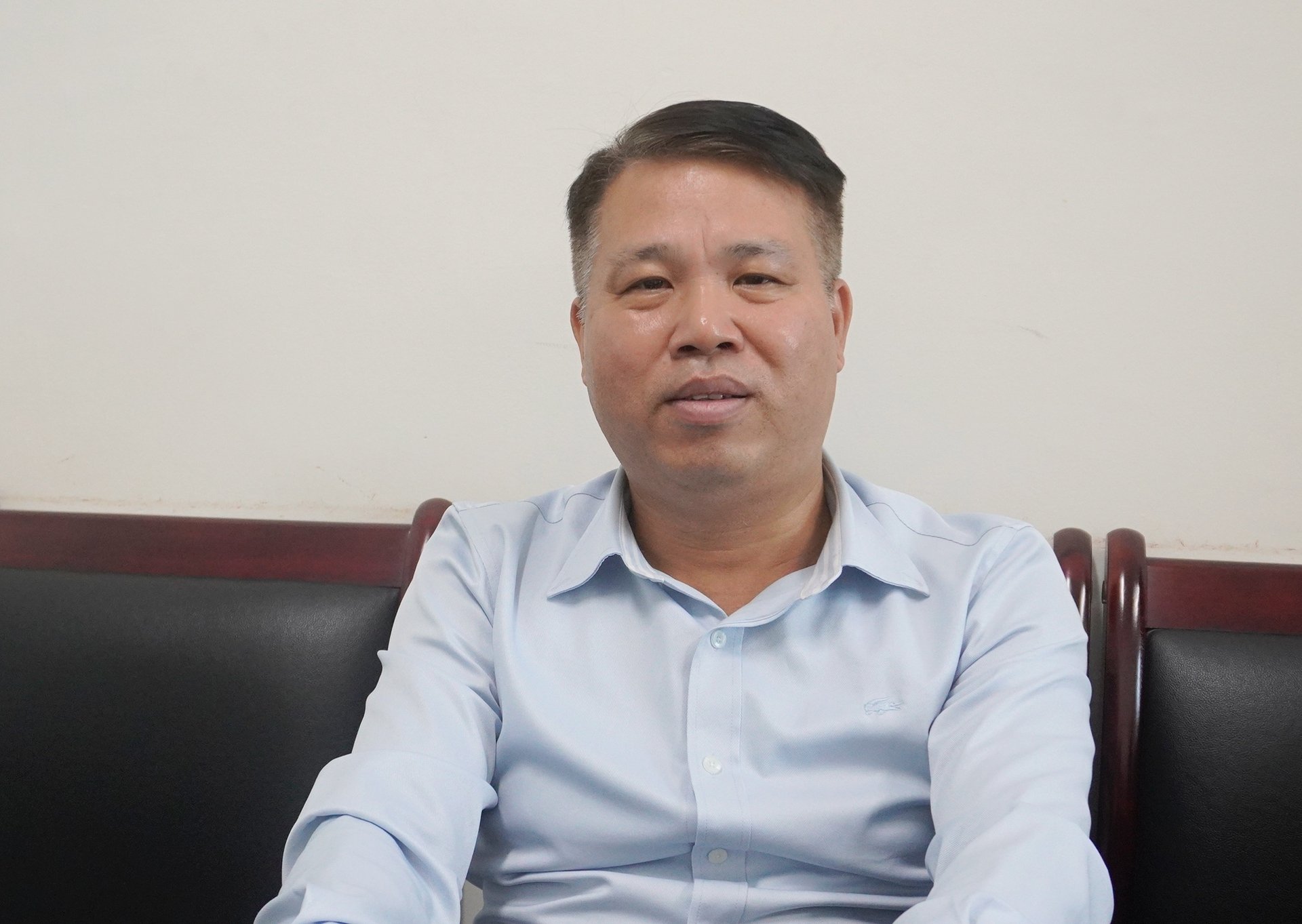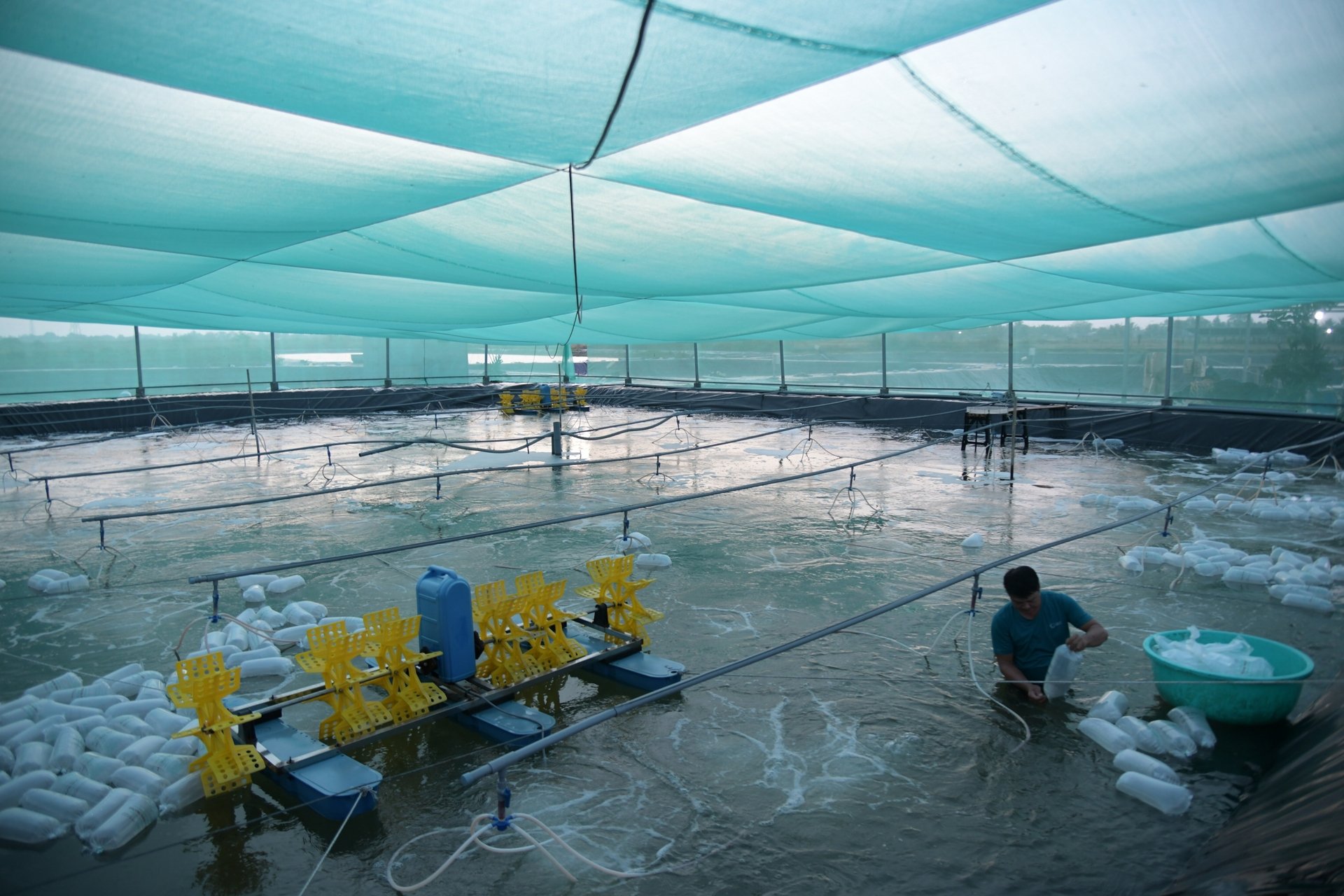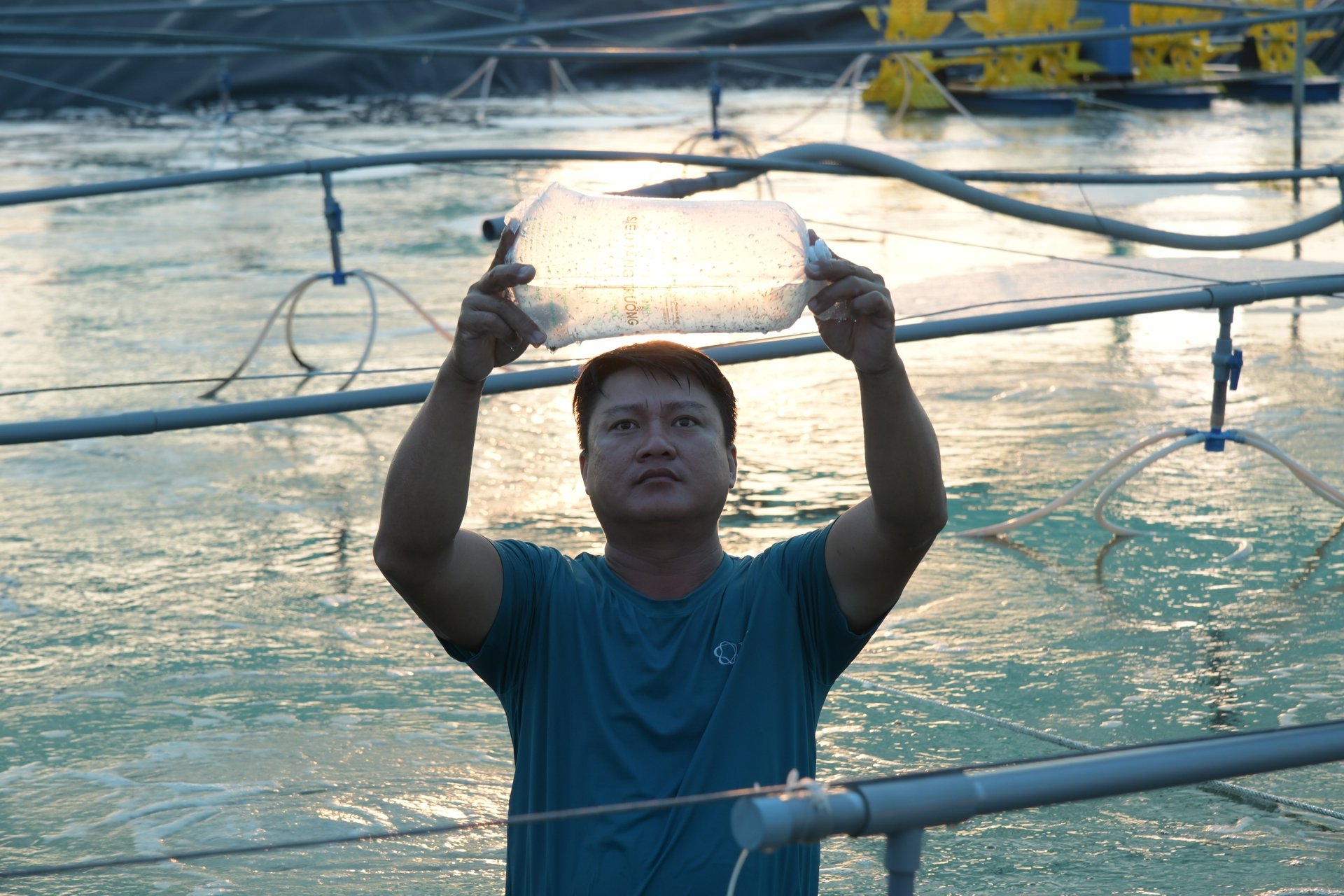November 27, 2025 | 19:59 GMT +7
November 27, 2025 | 19:59 GMT +7
Hotline: 0913.378.918
November 27, 2025 | 19:59 GMT +7
Hotline: 0913.378.918
What is your assessment of the role of disease-free shrimp breeds in the effectiveness and sustainability of industrial shrimp farming in Vietnam?
At present, with nearly 150.000 hectares dedicated to intensive and industrial shrimp farming, disease-free shrimp seed plays a crucial role. The saying "first comes the seed, second comes the environment, third comes the feed, and fourth comes the technique" emphasizes the critical importance of shrimp seed in brackish water shrimp production. In industrial intensive farming models, alongside high-quality shrimp seeds, the successful management of environmental factors, feed and disease control are essential to ensuring the success of each farming cycle.

Mr. Tran Cong Khoi, Director of the Breeding and Feed Department at the Directorate of Fisheries (Ministry of Agriculture and Environment), stated that the quality of shrimp seed supplied to farmers is generally quite good. Photo: Hong Tham.
Even in other farming models such as extensive farming, shrimp-forest, or shrimp-rice systems, disease-free shrimp seed plays an essential role. The use of high-quality shrimp seed, combined with improvements in farming techniques, helps enhance survival rates, boost productivity, and improve the overall quality of the shrimp, which ultimately increases economic efficiency.
Given the significant role of shrimp seed in these systems, how would you assess the quality of shrimp seed in our country today?
Currently, the quality of shrimp seed supplied to farmers is generally quite good. All production and breeding facilities for broodstock have been granted certification that they meet the required standards and are subject to regular inspections to ensure ongoing compliance. Similarly, most hatcheries that nurture shrimp seed from larvae are also certified and are routinely inspected to maintain these standards.
For white-leg shrimp, the broodstock stock is selectively bred or imported from reputable sources, ensuring high-quality genetics. On the other hand, for black tiger shrimp, while some broodstock is still harvested from the wild, the proportion of selectively bred parent stock has increased compared to previous years.

Along with using high-quality breeding stock, closely controlling environmental factors, feed and diseases will play a key role in ensuring the success of the farming season. Photo: Hong Tham.
Biosecurity in hatcheries has been an important focus for facilities. In addition, the strict adherence to regulations concerning the time and conditions of broodstock use has also been observed.
However, despite the significant improvements in the quality of shrimp seedlings, there are still numerous issues that need further attention and resolution. Could you share the measures that the Directorate of Fisheries have implemented, are currently implementing, and will continue to implement to tighten the quality of shrimp seedlings?
One of the main challenges is the continuous need for improvement in the quality of shrimp seedlings, which remains a substantial hurdle. The aging of broodstock shrimp, which is a critical factor for the production of healthy shrimp seedlings, requires a significant amount of time and effort. Only facilities with sufficient financial and technical capabilities are able to engage in the production of high-quality shrimp seedlings. As a result, the supply of shrimp seedlings still largely depends on natural sources and imports.
In addition, there are still some hatcheries and nurseries that have yet to obtain the necessary certifications or fail to implement biosecurity measures during the production and nurturing processes.
Furthermore, some consignments of shrimp seedlings, particularly those sold at informal and unregulated shrimp seedling markets, are still circulating in the market without undergoing proper quarantine or health checks.
In response to these challenges, the Directorate of Fisheries (Ministry of Agriculture and Environment) have issued Official Letter No. 161/TS-GTATS on January 24, 2025, to local authorities, emphasizing the importance of managing and developing aquatic breeds, aquatic feed, and environmental treatment products for aquaculture in 2025.
Looking ahead, the Directorate of Fisheries will continue to strengthen its efforts to manage and control the quality of shrimp seedlings. Some of the key measures that will be prioritized include: Tightening the certification process and checking the conditions for production and breeding facilities; Improving the traceability of parent stock and ensuring their quality; Promoting the adoption of biosecurity practices and disease safety measures throughout the production chain; and increasing the inspection and control of shrimp seedlings circulating in the market.

The quality of shrimp seedlings is a key factor determining the success of each farming season. Photo: Hong Tham.
In addition, one of the key tasks in the near future is to continue mobilizing resources to strengthen the selective breeding and shrimp broodstock preservation efforts in Vietnam. This initiative is vital for reducing the country’s dependency on imported broodstock, while simultaneously improving the overall quality and self-sufficiency of the domestic shrimp seed production industry.
What is your opinion on the establishment of a comprehensive traceability system for shrimp seedlings in Vietnam?
Currently, the Directorate of Fisheries has established a database for aquatic breeds, aquatic feed, and environmental treatment products (accessible at https://csdl.tongcucthuysan.gov.vn). However, the current system only provides general information about qualified facilities and does not yet trace individual batches of shrimp seedlings. Therefore, the idea of building a comprehensive traceability system for shrimp seedlings in Vietnam has already been considered.
In the coming period, as we continue to upgrade the database, we plan to provide accounts for shrimp seed production and nurturing facilities. This upgrade will enable these facilities to publicly and transparently share detailed information about the quality of the shrimp seedlings they sell. The goal is to allow farmers to easily access information and make well-informed decisions about the products they purchase, ensuring that they select shrimp seedlings that are of the highest quality and are best suited to their farming conditions and experience level.
Selective breeding of shrimp broodstock is an important solution that helps Vietnam reduce its dependence on imports. However, this process still faces many challenges. In your opinion, what is the biggest barrier preventing this from progressing as expected, and what solutions are needed to overcome these challenges?
The process of breeding, selective breeding, producing, and nurturing broodstock is still facing significant difficulties. Through research and investigation, several obstacles have been identified in accelerating the breeding process of shrimp broodstock, such as: The infrastructure for research and breeding of broodstock is still limited. It is very difficult to find locations that meet the biosecurity requirements for the research, breeding, and selective breeding of broodstock. While some research facilities meet the technical requirements, they are often hindered by legal procedures and are unable to collaborate or partner with economically viable facilities that can implement the aging process.
Additionally, the genetic resources needed for breeding are still insufficient, and the genetic database is not large enough to support the breeding and selective breeding efforts. There are very few facilities that can meet these requirements.
The process of selective breeding of shrimp broodstock requires a lot of time; it is not something that can be achieved overnight. It also demands substantial human and material resources, which means only facilities with strong capabilities can participate.
So, in your opinion, what kind of collaboration is needed between the government, businesses, and research institutes to accelerate the selective breeding process of shrimp broodstock?
This is very necessary. The government should establish a legal framework and policy mechanisms that make it easier for businesses to access and implement research and breeding programs. Research institutes have high-quality human resources and appropriate infrastructure, while businesses have abundant resources and a strong desire to control the shrimp broodstock for farming purposes.
As the state management agency for aquaculture, the Directorate of Fisheries are ready to support participating entities to accelerate the selective breeding of shrimp broodstock from domestic sources.
Thank you for your time!
Translated by Phuong Linh

(VAN) On November 27, in the meeting with Minister Tran Duc Thang, Mayor Yin Yong shared Beijing’s experience to improve environment and air quality.

(VAN) After 30 years, both sides identified strategic areas of cooperation: sustainable production, increasing coffee value and training for farmers.
/2025/11/27/4910-4-164708_294.jpg)
(VAN) On the afternoon of November 27 in Beijing, Minister of Agriculture and Environment Tran Duc Thang held a working session with several major Chinese enterprises operating in the agriculture and environment sector.

(VAN) The Department of Animal Health issued a provisional guideline requesting local authorities to increase surveillance, collect samples for testing, and conduct epidemiological investigations according to the established procedure.

(VAN) The United Nations recommends that Vietnam utilize data and artificial intelligence to enhance early disaster warnings and reduce GDP losses by 3.2% in the context of climate change.

(VAN) On the morning of November 27 in Beijing, Minister Tran Duc Thang and the Deputy Commissioner General of the General Administration of Customs of China signed a protocol on fresh jackfruit exports.

(VAN) As floodwaters recede, a vast network of irrigation works across eastern Gia Lai is emerging in a state of severe disrepair, with extensive damage demanding urgent restoration ahead of the 2025-2026 winter-spring cropping season.